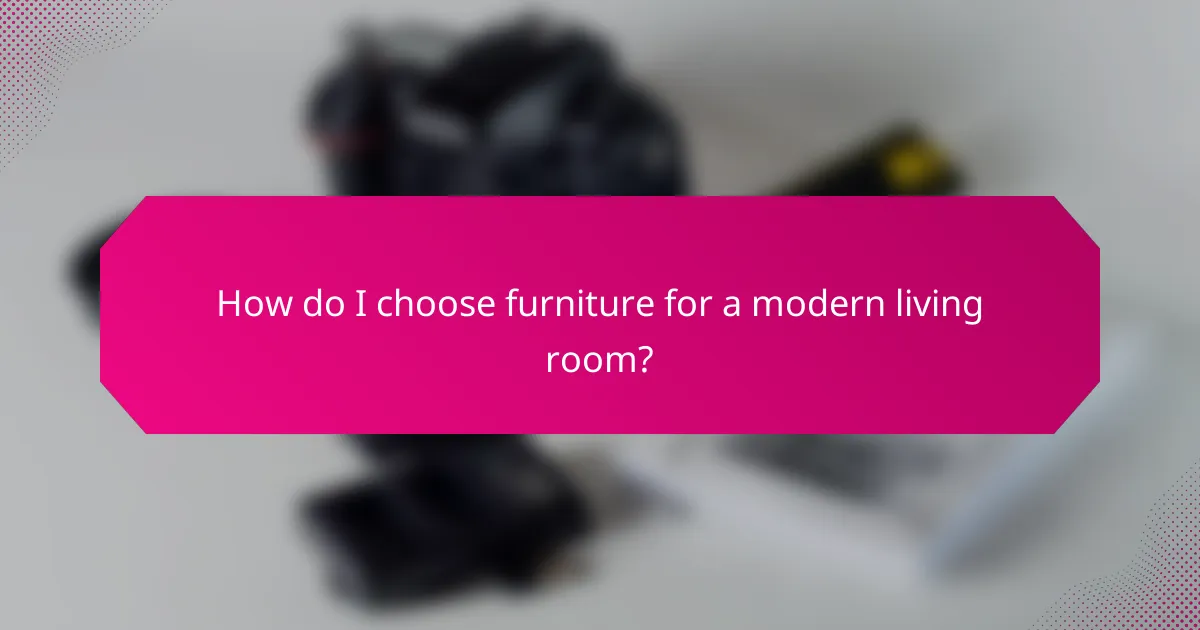Redesigning your living room can significantly enhance its flow and functionality, making it a more inviting space for both relaxation and social interaction. By adopting an open layout and strategically arranging furniture, you can create a modern style that reflects your personal taste while promoting a seamless movement throughout the room.

How can I redesign my living room for better flow?
To redesign your living room for better flow, focus on creating an open layout that encourages movement and interaction. This involves strategically arranging furniture and using design elements to define spaces while maintaining an inviting atmosphere.
Open floor plan layout
An open floor plan layout removes barriers between spaces, allowing for seamless transitions from one area to another. This can be achieved by eliminating unnecessary walls or using furniture to create distinct zones without obstructing sightlines.
Consider incorporating multifunctional areas, such as a combined living and dining space, which can enhance the overall flow. Aim for a layout that promotes natural pathways, making it easy for people to move around without feeling cramped.
Furniture arrangement for movement
Arranging furniture to facilitate movement is crucial for a functional living room. Position larger pieces, like sofas, away from high-traffic areas to avoid congestion. Ensure there are clear pathways of at least 60 cm (24 inches) between furniture for easy navigation.
Use smaller accent tables and lightweight chairs that can be easily moved to accommodate gatherings or activities. Avoid over-furnishing the space, as this can hinder flow and make the room feel cluttered.
Use of rugs to define spaces
Rugs can effectively define different areas within a living room, helping to create a sense of organization. Choose rugs that are large enough to fit under the front legs of your furniture, which helps anchor the space and visually separate zones.
Consider using contrasting colors or patterns to distinguish between areas, such as a cozy reading nook and a social seating arrangement. This not only enhances the aesthetic but also contributes to the overall flow by clearly marking functional spaces.

What modern styles can I incorporate in my living room?
Incorporating modern styles into your living room can transform the space into a functional and aesthetically pleasing area. Key styles to consider include Scandinavian minimalism, mid-century modern elements, and industrial chic accents, each offering unique characteristics and design principles.
Scandinavian minimalism
Scandinavian minimalism emphasizes simplicity, functionality, and natural elements. This style often features a neutral color palette, light woods, and clean lines, creating an airy and inviting atmosphere. To achieve this look, opt for furniture with sleek designs and incorporate plenty of natural light through large windows or light curtains.
Consider adding cozy textiles like wool throws or soft rugs to enhance comfort without cluttering the space. Keep decorations minimal, focusing on a few key pieces that reflect your personality, such as a single artwork or a stylish plant.
Mid-century modern elements
Mid-century modern design is characterized by its retro aesthetic, organic shapes, and functional furniture. Incorporating this style can be achieved by selecting iconic pieces like Eames chairs or a sleek coffee table with tapered legs. Use bold colors and geometric patterns to add vibrancy to your living room.
When redesigning, aim for a mix of materials such as wood, metal, and plastic to create visual interest. Balance is key; ensure that your mid-century pieces complement each other while maintaining a cohesive look throughout the room.
Industrial chic accents
Industrial chic combines raw materials with modern design, creating a unique and edgy atmosphere. To incorporate this style, consider using exposed brick walls, metal fixtures, and reclaimed wood furniture. These elements add character and warmth to your living room while maintaining a contemporary feel.
Incorporate industrial lighting fixtures, such as pendant lights or Edison bulbs, to enhance the aesthetic. To avoid overwhelming the space, balance industrial elements with softer furnishings, like plush sofas or textured cushions, ensuring a comfortable yet stylish environment.

What are the best color schemes for a modern living room?
The best color schemes for a modern living room typically feature a blend of neutral tones with bold accents, monochromatic palettes, or soft pastel colors. These choices create a contemporary aesthetic while enhancing the room’s flow and functionality.
Neutral tones with bold accents
Neutral tones such as whites, grays, and beiges provide a versatile backdrop that can make a living room feel spacious and inviting. To add visual interest, incorporate bold accents through furniture, artwork, or decorative items in vibrant colors like teal, mustard, or deep red.
When using this scheme, aim for a balance between the neutral base and the bold elements. For instance, a gray sofa paired with bright yellow cushions can create a striking focal point without overwhelming the space.
Monochromatic palettes
Monochromatic palettes involve using varying shades of a single color to create a cohesive look. This approach can make a living room feel sophisticated and streamlined, as different tones of blue or green can evoke calmness and serenity.
To effectively implement a monochromatic scheme, mix textures and patterns within the same color family. For example, pairing a light blue velvet sofa with darker blue patterned throw pillows can add depth while maintaining a unified appearance.
Pastel colors for a soft look
Pastel colors like soft pinks, mint greens, and light yellows can create a gentle and airy atmosphere in a living room. These hues are particularly effective in smaller spaces, as they can make the area feel larger and more open.
When using pastels, consider combining them with white or light wood accents to enhance the lightness of the room. For instance, a pastel blue wall can be beautifully complemented by white furniture and light-colored rugs, creating a serene and inviting environment.

How do I choose furniture for a modern living room?
Choosing furniture for a modern living room involves selecting pieces that enhance functionality, feature sleek designs, and utilize sustainable materials. Prioritize items that not only fit your aesthetic but also improve the flow and usability of the space.
Focus on functionality
When selecting furniture, consider how each piece will serve your daily activities. Look for multifunctional items, such as coffee tables with storage or sofas that convert into beds, to maximize utility without overcrowding the room.
Measure your space carefully to ensure that furniture fits well and allows for easy movement. Aim for a layout that promotes conversation and accessibility, keeping pathways clear and open.
Opt for sleek designs
Sleek designs are characterized by clean lines and minimal ornamentation, which can help create a modern aesthetic. Choose furniture with a streamlined profile, such as low-profile sofas and geometric coffee tables, to maintain an uncluttered look.
Neutral colors or subtle textures can enhance the modern feel while allowing for flexibility in decor. Consider incorporating a few bold accent pieces to add personality without overwhelming the space.
Consider sustainable materials
Incorporating sustainable materials into your living room furniture not only benefits the environment but can also enhance the overall aesthetic. Look for items made from reclaimed wood, bamboo, or recycled metals, which are durable and stylish.
Check for certifications like FSC (Forest Stewardship Council) or GREENGUARD, which indicate environmentally friendly practices. Investing in sustainable furniture can lead to long-term savings and a healthier living environment.

What lighting options enhance modern living room designs?
Modern living room designs benefit from a variety of lighting options that create a warm and inviting atmosphere while enhancing the overall aesthetic. Key choices include layered lighting techniques, statement pendant lights, and LED strip lighting, each contributing to a cohesive and stylish space.
Layered lighting techniques
Layered lighting combines ambient, task, and accent lighting to create depth and versatility in a living room. Ambient lighting provides overall illumination, task lighting focuses on specific areas like reading nooks, and accent lighting highlights artwork or architectural features.
To implement layered lighting, consider using ceiling fixtures for ambient light, table lamps for task lighting, and wall sconces or spotlights for accent lighting. This approach allows for flexibility in adjusting the mood and functionality of the space.
Statement pendant lights
Statement pendant lights serve as focal points in modern living rooms, adding both style and character. These fixtures come in various designs, from sleek and minimalistic to bold and artistic, making them ideal for enhancing the room’s decor.
When selecting pendant lights, consider the scale of your living room. Larger spaces may benefit from oversized pendants, while smaller rooms can use multiple smaller fixtures to create visual interest without overwhelming the area.
LED strip lighting for ambiance
LED strip lighting is an effective way to add ambiance and highlight specific areas in a modern living room. These flexible strips can be installed under furniture, along shelves, or behind TVs to create a soft glow that enhances the overall atmosphere.
When using LED strip lighting, choose colors that complement your decor. Warm white tones create a cozy feel, while cool colors can add a contemporary touch. Ensure that the strips are properly installed and concealed to maintain a sleek appearance.

What are the key elements of a successful living room redesign?
A successful living room redesign focuses on optimizing space, enhancing flow, and achieving a modern aesthetic. Key elements include understanding the layout, selecting appropriate furniture, and incorporating effective lighting to create a cohesive and inviting environment.
Understanding space and layout
Understanding space and layout is crucial for a successful living room redesign. Begin by assessing the dimensions of your room and identifying any architectural features, such as windows and doors, that may influence furniture placement. Aim for a layout that promotes easy movement and interaction.
Consider using a floor plan to visualize different arrangements. Common layouts include the L-shape, U-shape, and open-concept designs. Each has its benefits; for example, an open-concept layout can enhance flow and connectivity, while an L-shape may create distinct areas for conversation and entertainment.
When planning your layout, prioritize functionality. Ensure that seating arrangements encourage conversation and that pathways are clear. Avoid overcrowding the space with furniture; a good rule of thumb is to leave at least 24 inches of walking space between pieces. This will help maintain an open and inviting atmosphere.
